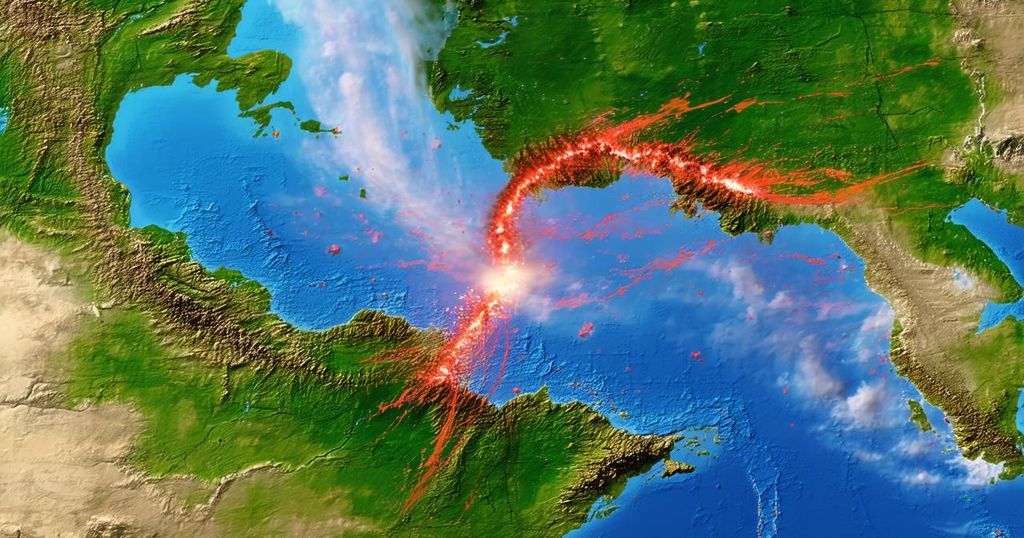The article outlines the strongest earthquakes recorded, with the Valdivia Earthquake (1960) at 9.5 magnitude leading the list, followed by the Great Alaska Earthquake (1964, 9.2), the Sumatra-Andaman Earthquake (2004, 9.1), and the Tohoku Earthquake (2011, 9.1). The Kamchatka Earthquake (1952, 9.0) is also noted. While the magnitudes indicate severity, the impact varied with death tolls and destruction resulting from subsequent tsunamis.
The strongest earthquake ever recorded is the Valdivia Earthquake, characterized by a magnitude of 9.5 and occurring on May 22, 1960, in the Bio-Bio region of Chile. This cataclysmic event was not only notable for its intensity but also for the profound effects of ten minutes of vigorous shaking that initiated a series of tsunami waves across the Pacific Ocean. The aftermath included an estimated death toll of approximately 1,600 individuals, 3,000 injured, and about 2 million displaced due to destruction of homes. Furthermore, the resulting tsunami claimed over 200 lives in coastal areas across Hawaii, Japan, and the Philippines, illustrating the widespread impact of the quake. Additionally, this earthquake triggered the eruption of the Cordón Caulle volcano, which exacerbated the devastation in the affected regions. The second most powerful earthquake recorded was the 1964 Great Alaska Earthquake, occurring on March 27, 1964, with a magnitude of 9.2. It caused catastrophic destruction primarily in Anchorage and nearby areas due to significant land subsidence and intense shake. Although the total death toll was limited to 131 people, owing to the sparse population in some regions, the extensive damage from the tsunami that followed made this earthquake incredibly devastating. The 2004 Sumatra-Andaman Earthquake, registering a magnitude of 9.1 on December 26, 2004, stands as one of the deadliest seismic events in history. Its impact extended to numerous countries including Indonesia, Thailand, Sri Lanka, and India, where the resultant tsunami led to the loss of over 230,000 lives. The indiscriminate destruction of entire communities in Sumatra underscored the urgent necessity for improved tsunami warning systems worldwide. Similarly, the magnitude 9.1 Tohoku Earthquake occurred on March 11, 2011, off the coast of Honshu, Japan. This earthquake resulted in intense shaking that persisted for over six minutes, culminating in a devastating tsunami that inflicted substantial damage along Japan’s northeastern coast. Approximately 18,000 fatalities were reported alongside the catastrophic meltdown of the Fukushima nuclear power plant, which represented a critical moment in nuclear safety discussions. Lastly, the Kamchatka Earthquake, measuring 9.0, struck on November 4, 1952, in a remote area of Russia. Despite being one of the largest earthquakes, its isolated location limited casualties to an estimated 10,000-15,000 people. The generated tsunami caused significant damage, particularly in the Aleutian Islands and Hawaiian Islands, costing roughly $17 million in damages.
This article discusses the strongest earthquakes ever recorded in terms of magnitude, emphasizing that magnitude signifies the tremor’s severity rather than the consequences such as death tolls or collateral damage. Understanding these seismic events enables us to comprehend their devastating power and the necessity for proper safety measures and infrastructure development to mitigate their impact on human life.
In conclusion, the documented earthquakes illustrate the remarkable power of natural forces and their ability to cause widespread destruction across vast geographical areas. The lessons learned from these seismic events emphasize the need for enhanced preparedness, improved warning systems, and resilient infrastructure to safeguard against future calamities.
Original Source: science.howstuffworks.com






